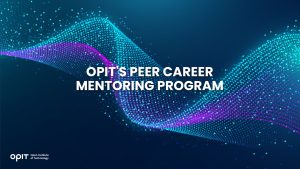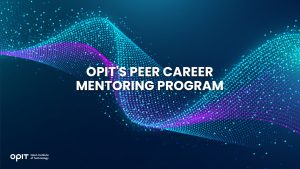

With your BSc in Computer Science completed you have a ton of technical skills (ranging from coding to an in-depth understanding of computer architecture) to add to your resume. But post-graduate education looms and you’re tossing around various options, including doing an MCA (Master of computer applications).
An MCA builds on what you learned in your BSc, with fields of study including computational theory, algorithm design, and a host of mathematical subjects. Knowing that, you’re asking yourself “Can I do MCA after BSc Computer Science?” Let’s answer that question.
Eligibility for MCA After BSc Computer Science
The question of eligibility inevitably comes up when applying to study for an MCA, with three core areas you need to consider:
- The minimum requirements
- Entrance exams and admissions processes
- Your performance in your BSc in Computer Science
Minimum Requirements
Starting with the basics, this is what you need to apply for to study for your MCA:
- A Bachelor’s degree in a relevant computing subject (like computer science or computer applications.)
- Some institutions accept equivalent courses and external courses as evidence of your understanding of computers
- If you’re an international student, you’ll likely need to pass an English proficiency test
- IELTS and TOEFL are the most popular of these tests, though some universities require a passing grade in a PTE test.
- Evidence that you have the necessary financial resources to cover the cost of your MCA
- Costs vary but can be as much as $40,000 for a one or two-year course.
Entrance Exams and Admission Processes
Some universities require you to take entrance exams, which can fall into the following categories:
- National Level – You may have to take a national-level exam (such as India’s NIMCET) to demonstrate your basic computing ability.
- State-Level – Most American universities don’t require state-level entrance exams, though some international universities do. For instance, India has several potential exams you may need to take, including the previously-mentioned NIMCET, the WBJECA, and the MAH MCA CET. All measure your computing competence, with most also requiring you to have completed your BSc in Computer Science before you can take the exam.
- University-Specific – Many colleges, at least in the United States, require students to have passing grades in either the ACT or SATs, both of which you take at the high school level. Some colleges have also started accepting the CLT, which is a new test that positions itself as an alternative to the ACT or SAT. The good news is that you’ll have taken these tests already (assuming you study in the U.S.), so you don’t have to take them again to study for your MCA.
Your Performance Matters
How well you do in your computer science degree matters, as universities have limited intakes and will always favor the highest-performing students (mitigating circumstances notwithstanding). For example, many Indian universities that offer MCAs ask students to achieve at least a 50% or 60% CGPA (Cumulative Grade Point Average) across all modules before considering the student for their programs.
Benefits of Pursuing MCA After BSc Computer Science
Now you know the answer to “Can I do MCA after BSc Computer Science,” is that you can (assuming you meet all other criteria), you’re likely asking yourself if it’s worth it. These three core benefits make pursuing an MCA a great use of your time:
- Enhanced Knowledge and Skills – If your BSc in Computer Science is like the foundation that you lay before building a house, an MCA is the house itself. You’ll be building up the basic skills you’ve developed, which includes getting to grips with more advanced programming languages and learning the intricacies of software development. Those who are more interested in the hardware side of things can dig into the specifics of networking.
- Improved Career Prospects – Your career prospects enjoy a decent bump if you have an MCA, with Pay Scale noting the average base salary of an MCA graduate in the United States to be $118,000 per year. That’s about $15,000 more per year than the $103,719 salary Indeed says a computer scientist earns. Add in the prospect of assuming higher (or more senior) roles in a company and the increased opportunities for specialization that come with post-graduate studies and your career prospects look good.
- Networking Opportunities – An MCA lets you delve deeper into the computing industry, exposing you to industry trends courtesy of working with people who are already embedded within the field. Your interactions with existing professionals work wonders for networking, giving you access to connections that could enhance your future career. Plus, you open the door to internships with more prestigious companies, in addition to participating in study projects that look attractive on a resume.
Career Prospects after MCA
After you’ve completed your MCA, the path ahead of you branches out, opening up the possibilities of entering the workforce or continuing your studies.
Job Roles and Positions
If you want to jump straight into the workforce once you have your MCA, there are several roles that will welcome you with open arms:
- Software Developer/Engineer – Equipped with the advanced programming skills an MCA provides, you’re in a great position to take a junior software development role that can quickly evolve into a senior position.
- Systems Analyst – Organization is the name of the game when you’re a systems analyst. These professionals focus on how existing computer systems are organized, coming up with ways to streamline IT operations to get companies operating more efficiently.
- Database Administrator – Almost any software (or website) you care to mention has databases running behind the scenes. Database administrators organize these virtual “filing systems,” which can cover everything from basic login details for websites to complex financial information for major companies.
- Network Engineer – Even the most basic office has a computer network (taking in desktops, laptops, printers, servers, and more) that requires management. A Network engineer provides that management, with a sprinkling of systems analysis that may help with the implementation of new networks.
- IT Consultant – If you don’t want to be tied down to one company, you can take your talents on the road to serve as an IT consultant for companies that don’t have in-house IT teams. You’ll be a “Jack of all trades” in this role, though many consultants choose to specialize in either the hardware or software sides.
Industries and Sectors
Moving away from specific roles, the skills you earn through an MCA makes you desirable in a host of industries and sectors:
- IT and Software Companies – The obvious choice for an MCA graduate, IT and software focus on hardware and software respectively. It’s here where you’ll find the software development and networking roles, though whether you work for an agency, as a solo consultant, or in-house for a business is up to you.
- Government Organizations – In addition to the standard software and networking needs that government agencies face (like most workplaces), cybersecurity is critical in this field. According to Security Intelligence, 106 government or state agencies faced ransomware attacks in 2022, marking nearly 30 more attacks than they faced the year prior. You may be able to turn your knowledge to thwarting this rising tide of cyber-threats, though there are many less security-focused roles available in government organizations.
- Educational Institutions – The very institutions from which you earn your MCA have need of the skills they teach. You’ll know this yourself from working first-hand with the complex networks of computing hardware the average university or school has. Throw software into the mix and your expertise can help educational institutions save money and provide better services to students.
- E-Commerce and Startups – Entrepreneurs with big ideas need technical people to help them build the foundations of their businesses, meaning MCAs are always in demand at startups. The same applies to e-commerce companies, which make heavy use of databases to store customer and financial details.
Further Education and Research Opportunities
You’ve already taken a big step into further education by completing an MCA (which is a post-graduate course), so you’re in the perfect place to take another step. Choosing to work on getting your doctorate in computer science requires a large time commitment, with most programs taking between four and five years, but it allows for more independent study and research. The financial benefits may also be attractive, with Salary.com pointing to an average base salary of $120,884 (before bonuses and benefits) for those who take their studies to the Ph.D. level.
Top MCA Colleges and Universities
Drawing from data provided by College Rank, the following are the top three colleges for those interested in an MCA:
- The University of Washington – A 2.5-year course that is based in the college’s Seattle campus, the University of Washington’s MCA is a part-time program that accepts about 60% of the 120 applicants it receives each year.
- University of California-Berkeley (UCB) – UCB’s program is a tough one to get into, with students needing to achieve a minimum 3.0 Grade Point Average (GPA) on top of having three letters of recommendation. But once you’re in, you’ll join a small group of students focused on research into AI, database management, and cybersecurity, among other areas.
- University of Illinois – Another course that has stringent entry requirements, the University of Illinois’s MCA program requires you to have a 3.2 GPA in your BSc studies to apply. It’s also great for those who wish to specialize, as you get a choice of 11 study areas to focus on for your thesis.
Conclusion
Pursuing an MCA after completing your BSc in Computer Science allows you to build up from your foundational knowledge. Your career prospects open up, meaning you’ll spend less time “working through the ranks” than you would if you enter the workforce without an MCA. Plus, the data shows that those with MCAs earn an average of about $15,000 per year more than those with a BSc in Computer Science.
If you’re pondering the question, “Can I do MCA after BSc Computer Science,” the answer comes down to what you hope to achieve in your career. Those interested in positions of seniority, higher pay scales, and the ability to specialize in specific research areas may find an MCA attractive.
Related posts

Source:
- Raconteur, published on November 06th, 2025
Many firms have conducted successful Artificial Intelligence (AI) pilot projects, but scaling them across departments and workflows remains a challenge. Inference costs, data silos, talent gaps and poor alignment with business strategy are just some of the issues that leave organisations trapped in pilot purgatory. This inability to scale successful experiments means AI’s potential for improving enterprise efficiency, decision-making and innovation isn’t fully realised. So what’s the solution?
Although it’s not a magic bullet, an AI operating model is really the foundation for scaling pilot projects up to enterprise-wide deployments. Essentially it’s a structured framework that defines how the organisation develops, deploys and governs AI. By bringing together infrastructure, data, people, and governance in a flexible and secure way, it ensures that AI delivers value at scale while remaining ethical and compliant.
“A successful AI proof-of-concept is like building a single race car that can go fast,” says Professor Yu Xiong, chair of business analytics at the UK-based Surrey Business School. “An efficient AI technology operations model, however, is the entire system – the processes, tools, and team structures – for continuously manufacturing, maintaining, and safely operating an entire fleet of cars.”
But while the importance of this framework is clear, how should enterprises establish and embed it?
“It begins with a clear strategy that defines objectives, desired outcomes, and measurable success criteria, such as model performance, bias detection, and regulatory compliance metrics,” says Professor Azadeh Haratiannezhadi, co-founder of generative AI company Taktify and professor of generative AI in cybersecurity at OPIT – the Open Institute of Technology.
Platforms, tools and MLOps pipelines that enable models to be deployed, monitored and scaled in a safe and efficient way are also essential in practical terms.
“Tools and infrastructure must also be selected with transparency, cost, and governance in mind,” says Efrain Ruh, continental chief technology officer for Europe at Digitate. “Crucially, organisations need to continuously monitor the evolving AI landscape and adapt their models to new capabilities and market offerings.”
An open approach
The most effective AI operating models are also founded on openness, interoperability and modularity. Open source platforms and tools provide greater control over data, deployment environments and costs, for example. These characteristics can help enterprises to avoid vendor lock-in, successfully align AI to business culture and values, and embed it safely into cross-department workflows.
“Modularity and platformisation…avoids building isolated ‘silos’ for each project,” explains professor Xiong. “Instead, it provides a shared, reusable ‘AI platform’ that integrates toolchains for data preparation, model training, deployment, monitoring, and retraining. This drastically improves efficiency and reduces the cost of redundant work.”
A strong data strategy is equally vital for ensuring high-quality performance and reducing bias. Ideally, the AI operating model should be cloud and LLM agnostic too.
“This allows organisations to coordinate and orchestrate AI agents from various sources, whether that’s internal or 3rd party,” says Babak Hodjat, global chief technology officer of AI at Cognizant. “The interoperability also means businesses can adopt an agile iterative process for AI projects that is guided by measuring efficiency, productivity, and quality gains, while guaranteeing trust and safety are built into all elements of design and implementation.”
A robust AI operating model should feature clear objectives for compliance, security and data privacy, as well as accountability structures. Richard Corbridge, chief information officer of Segro, advises organisations to: “Start small with well-scoped pilots that solve real pain points, then bake in repeatable patterns, data contracts, test harnesses, explainability checks and rollback plans, so learning can be scaled without multiplying risk. If you don’t codify how models are approved, deployed, monitored and retired, you won’t get past pilot purgatory.”
Of course, technology alone can’t drive successful AI adoption at scale: the right skills and culture are also essential for embedding AI across the enterprise.
“Multidisciplinary teams that combine technical expertise in AI, security, and governance with deep business knowledge create a foundation for sustainable adoption,” says Professor Haratiannezhadi. “Ongoing training ensures staff acquire advanced AI skills while understanding associated risks and responsibilities.”
Ultimately, an AI operating model is the playbook that enables an enterprise to use AI responsibly and effectively at scale. By drawing together governance, technological infrastructure, cultural change and open collaboration, it supports the shift from isolated experiments to the kind of sustainable AI capability that can drive competitive advantage.
In other words, it’s the foundation for turning ambition into reality, and finally escaping pilot purgatory for good.

The Open Institute of Technology (OPIT) is the perfect place for those looking to master the core skills and gain the fundamental knowledge they need to enter the exciting and dynamic environment of the tech industry. While OPIT’s various degrees and courses unlock the doors to numerous careers, students may not know exactly which line of work they wish to enter, or how, exactly, to take the next steps.
That’s why, as well as providing exceptional online education in fields like Responsible AI, Computer Science, and Digital Business, OPIT also offers an array of career-related services, like the Peer Career Mentoring Program. Designed to provide the expert advice and support students need, this program helps students and alumni gain inspiration and insight to map out their future careers.
Introducing the OPIT Peer Career Mentoring Program
As the name implies, OPIT’s Peer Career Mentoring Program is about connecting students and alumni with experienced peers to provide insights, guidance, and mentorship and support their next steps on both a personal and professional level.
It provides a highly supportive and empowering space in which current and former learners can receive career-related advice and guidance, harnessing the rich and varied experiences of the OPIT community to accelerate growth and development.
Meet the Mentors
Plenty of experienced, expert mentors have already signed up to play their part in the Peer Career Mentoring Program at OPIT. They include managers, analysts, researchers, and more, all ready and eager to share the benefits of their experience and their unique perspectives on the tech industry, careers in tech, and the educational experience at OPIT.
Examples include:
- Marco Lorenzi: Having graduated from the MSc in Applied Data Science and AI program at OPIT, Marco has since progressed to a role as a Prompt Engineer at RWS Group and is passionate about supporting younger learners as they take their first steps into the workforce or seek career evolution.
- Antonio Amendolagine: Antonio graduated from the OPIT MSc in Applied Data Science and AI and currently works as a Product Marketing and CRM Manager with MER MEC SpA, focusing on international B2B businesses. Like other mentors in the program, he enjoys helping students feel more confident about achieving their future aims.
- Asya Mantovani: Asya took the MSc in Responsible AI program at OPIT before taking the next steps in her career as a Software Engineer with Accenture, one of the largest IT companies in the world, and a trusted partner of the institute. With a firm belief in knowledge-sharing and mutual support, she’s eager to help students progress and succeed.
The Value of the Peer Mentoring Program
The OPIT Peer Career Mentoring Program is an invaluable source of support, inspiration, motivation, and guidance for the many students and graduates of OPIT who feel the need for a helping hand or guiding light to help them find the way or make the right decisions moving forward. It’s a program built around the sharing of wisdom, skills, and insights, designed to empower all who take part.
Every student is different. Some have very clear, fixed, and firm objectives in mind for their futures. Others may have a slightly more vague outline of where they want to go and what they want to do. Others live more in the moment, focusing purely on the here and now, but not thinking too far ahead. All of these different types of people may need guidance and support from time to time, and peer mentoring provides that.
This program is also just one of many ways in which OPIT bridges the gaps between learners around the world, creating a whole community of students and educators, linked together by their shared passions for technology and development. So, even though you may study remotely at OPIT, you never need to feel alone or isolated from your peers.
Additional Career Services Offered by OPIT
The Peer Career Mentoring Program is just one part of the larger array of career services that students enjoy at the Open Institute of Technology.
- Career Coaching and Support: Students can schedule one-to-one sessions with the institute’s experts to receive insightful feedback, flexibly customized to their exact needs and situation. They can request resume audits, hone their interview skills, and develop action plans for the future, all with the help of experienced, expert coaches.
- Resource Hub: Maybe you need help differentiating between various career paths, or seeing where your degree might take you. Or you need a bit of assistance in handling the challenges of the job-hunting process. Either way, the OPIT Resource Hub contains the in-depth guides you need to get ahead and gain practical skills to confidently move forward.
- Career Events: Regularly, OPIT hosts online career event sessions with industry experts and leaders as guest speakers about the topics that most interest today’s tech students and graduates. You can join workshops to sharpen your skills and become a better prospect in the job market, or just listen to the lessons and insights of the pros.
- Internship Opportunities: There are few better ways to begin your professional journey than an internship at a top-tier company. OPIT unlocks the doors to numerous internship roles with trusted institute partners, as well as additional professional and project opportunities where you can get hands-on work experience at a high level.
In addition to the above, OPIT also teams up with an array of leading organizations around the world, including some of the biggest names, including AWS, Accenture, and Hype. Through this network of trust, OPIT facilitates students’ steps into the world of work.
Start Your Study Journey Today
As well as the Peer Career Mentoring Program, OPIT provides numerous other exciting advantages for those who enroll, including progressive assessments, round-the-clock support, affordable rates, and a team of international professors from top universities with real-world experience in technology. In short, it’s the perfect place to push forward and get the knowledge you need to succeed.
So, if you’re eager to become a tech leader of tomorrow, learn more about OPIT today.
Have questions?
Visit our FAQ page or get in touch with us!
Write us at +39 335 576 0263
Get in touch at hello@opit.com
Talk to one of our Study Advisors
We are international
We can speak in:


